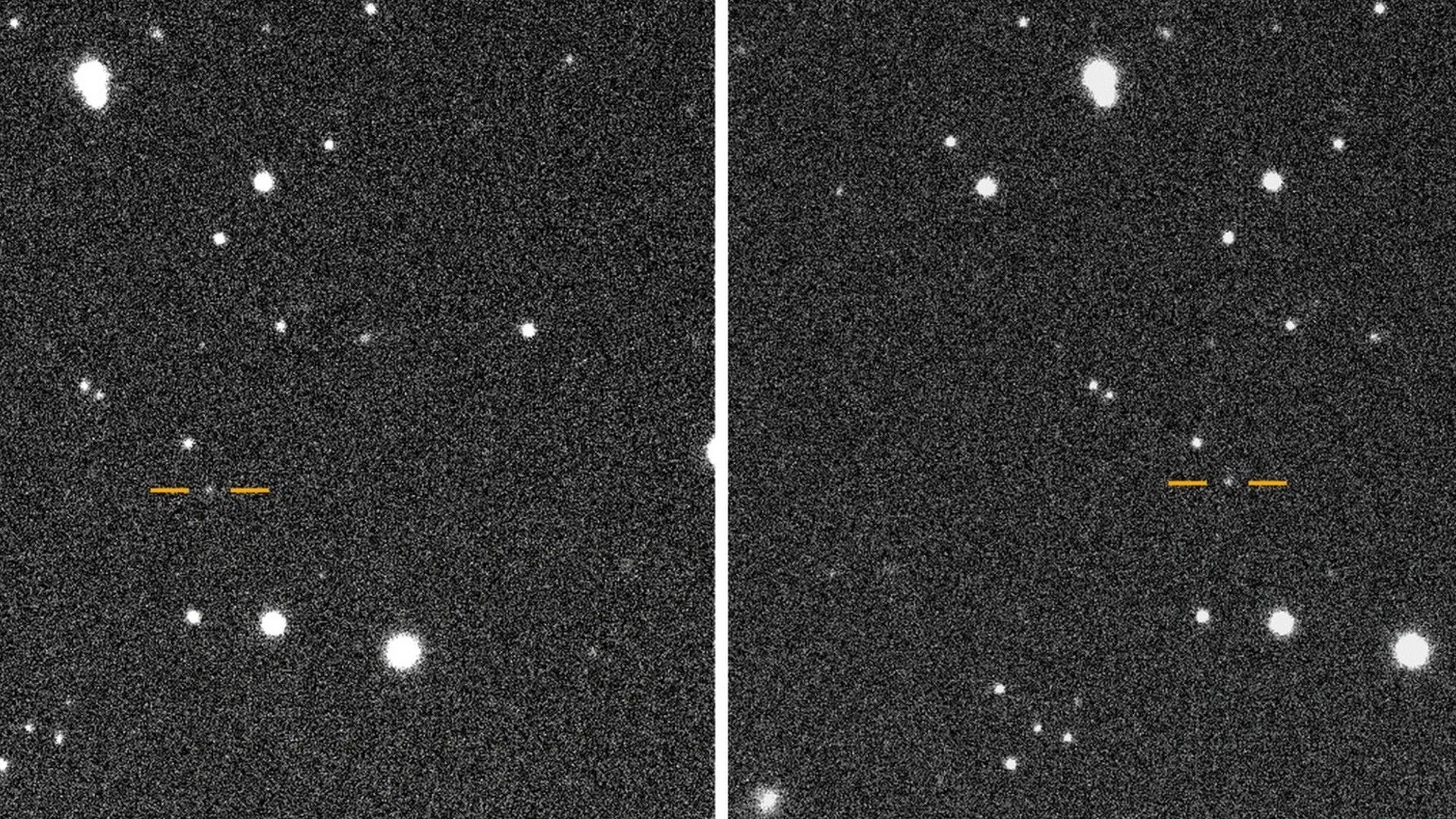💫 Ultra-fast asteroid discovered near the Sun
Follow us on Google News (click on ☆)
Asteroid 2025 SC79 completes its revolution around the Sun in just 128 days, a speed that places it second among the fastest asteroid orbits ever recorded. With an estimated size of approximately 700 meters long (about 2,300 feet), comparable to the world's tallest skyscrapers, this object travels on a trajectory that keeps it within Venus's orbit. Its detection was made by astronomer Scott Sheppard, famous for his numerous discoveries of moons around giant planets, who spotted it on September 27th in the twilight light.

Image sequence showing the movement of asteroid 2025 SC79 relative to the fixed background stars during its discovery night
Credit: Scott S. Sheppard
The location of this asteroid in the twilight zone, that period when the Sun has just set or is about to rise, represents a major technical challenge for astronomers. As Scott Sheppard explains in the Carnegie Science statement, these objects located near the Sun can only be observed during brief time windows. This observation difficulty makes these asteroids particularly concerning for planetary security, because if they were to change their trajectory toward Earth, their late detection would limit response possibilities.
The official announcement of the discovery was released on October 15th via a circular from the Minor Planet Center, the international organization responsible for cataloging small celestial bodies.
The next observations of 2025 SC79 will have to wait several months, until the asteroid emerges from behind the Sun from our Earthly perspective. Future research will allow analysis of its composition and understanding of how it withstands the extreme temperatures generated by its proximity to our star. Studying these fast objects also helps scientists reconstruct the history of the Solar System by tracing the gravitational perturbations that have altered their orbits over billions of years.
Continuous monitoring of asteroids represents a priority for space agencies and astronomical observatories worldwide. Although no immediate threat has been identified after decades of methodical research, early detection remains essential for protecting our planet. The international network of telescopes, including NASA facilities, maintains constant vigilance, considering this mission important enough to continue even under difficult operational conditions.
Orbital mechanics of fast-moving bodies
The orbital speed of a celestial body around the Sun depends mainly on two factors: its distance from the star and the shape of its orbit. According to Kepler's laws, the closer an object is to the Sun, the higher its orbital speed, which explains why asteroids like 2025 SC79 complete their revolution in such a short time.
These fast orbits typically follow highly elongated elliptical trajectories, where the asteroid passes very close to the Sun at its perihelion (closest point) and then moves away at its aphelion (farthest point). This orbital configuration exposes the object to extreme thermal variations and intense gravitational forces that can alter its internal structure over time.
The stability of these orbits is influenced by gravitational perturbations from neighboring planets, particularly Venus and Mercury. These interactions can gradually modify the orbital inclination, eccentricity, and even transfer the asteroid to a different orbit over millions of years.
Studying these orbital dynamics helps planetary scientists trace the migration history of small bodies in the Solar System. It also enables the development of predictive models to anticipate future orbital evolutions and assess potential collision risks with terrestrial planets.